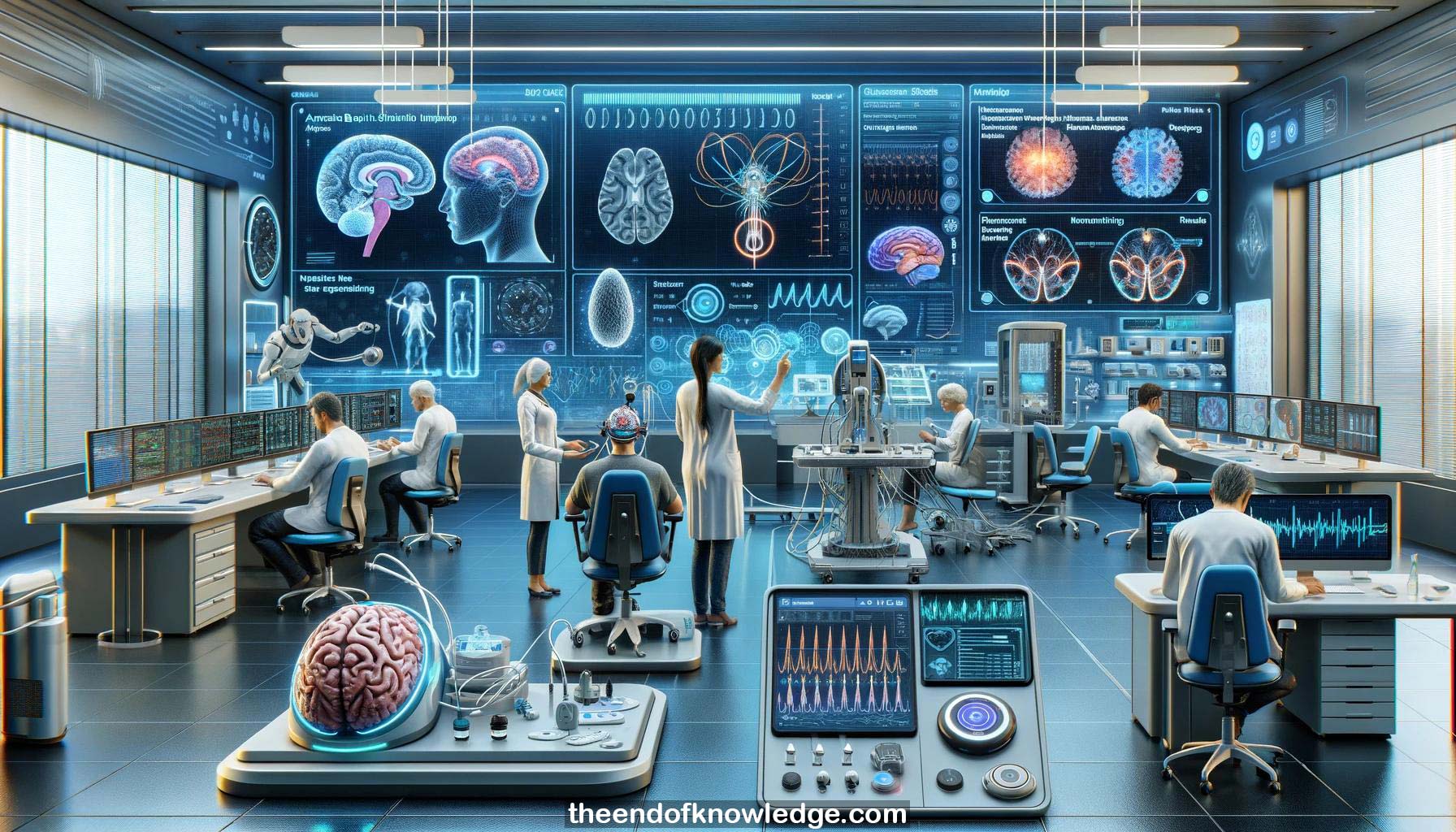 >
>
Concept Graph & Resume using Claude 3 Opus | Chat GPT4 | Llama 3:
Resume:
1.- Vaclav Kremen from Mayo Clinic discusses new technologies and research in chronic brain recordings and stimulation devices for neurological diseases like epilepsy.
2.- Neuralink's brain-computer interface is a significant leap, allowing a paraplegic patient to control a computer mouse and play games.
3.- Brain stimulators treat diseases by delivering therapeutic stimulation. Sensing capabilities help estimate the patient's condition.
4.- Deep brain stimulation treats epilepsy by stimulating anterior nucleus of thalamus or using responsive neurostimulation. Reduction in seizure frequency is seen.
5.- Epilepsy is characterized by recurrent seizures from changes in brain electrical activity. 3% of population has active epilepsy. Large animals are affected similarly.
6.- Vagus nerve stimulator and Neurovista device were implantable technologies used for epilepsy management. Neurovista aimed to predict seizures by sensing brain signals.
7.- Reporting seizure frequency, the main treatment outcome measure, is often inaccurate as patients have difficulty recalling seizures that occurred months ago.
8.- A platform was designed to integrate a distributed system with an implanted device for rich data collection and optimizing stimulation therapy.
9.- The system included an implantable stimulator, tablet for patient interaction, and cloud platform for physicians to analyze data and adapt therapy.
10.- In a study, 5 patients were implanted and monitored for years, collecting data 65-80% per day. Some patients needed more follow-up.
11.- Low frequency stimulation showed lower seizure frequency and suppression of interictal spiking compared to high frequency in the patient group.
12.- Seizures mostly occurred during waking for the temporal lobe epilepsy patients. Spike rates were lower during day and higher at night.
13.- Stimulation attenuated circadian and longer rhythms seen in the power of interictal spike rates based on spectral analysis.
14.- High frequency stimulation disrupted sleep, with patients spending more wake time during sleep and having shortened non-REM sleep duration.
15.- Impedance between implanted electrodes showed variations over time and dropped during non-REM sleep, even during short daytime naps.
16.- Evoked potential measurements by stimulating thalamic nuclei and recording hippocampal response showed differences between wakefulness and sleep states.
17.- In a memory test, patients performed better when on long-term low frequency stimulation compared to high frequency, possibly due to sleep disruption.
18.- In an ICU study, cortical stimulation was found to potentially facilitate word recall better than hippocampal stimulation.
19.- The study involved a large team effort across Mayo Clinic, Yale, Dartmouth, Oxford, UCSF and industry partners.
20.- Algorithms can detect seizure onset to warn patients, trigger questionnaires assessing cognitive performance, and enable responsive testing.
21.- The investigational device is currently used in two studies with temporal lobe epilepsy patients, stimulating different thalamic and hippocampal targets.
22.- Battery life of the device is excellent, lasting the whole day until recharging. Battery performance is stable even after 7 years.
23.- Data security involves multiple levels - coding patient IDs, using HIPAA-compliant cloud, and securing device-tablet link with special protocols.
24.- Caution is needed if combining brain implants with other electrical stimulation as it may induce unsafe currents. Manufacturer guidance should be sought.
25.- If electrode impedance becomes too high, troubleshooting is required to identify issues like broken electrodes and proceed with replacement if needed.
Knowledge Vault built byDavid Vivancos 2024